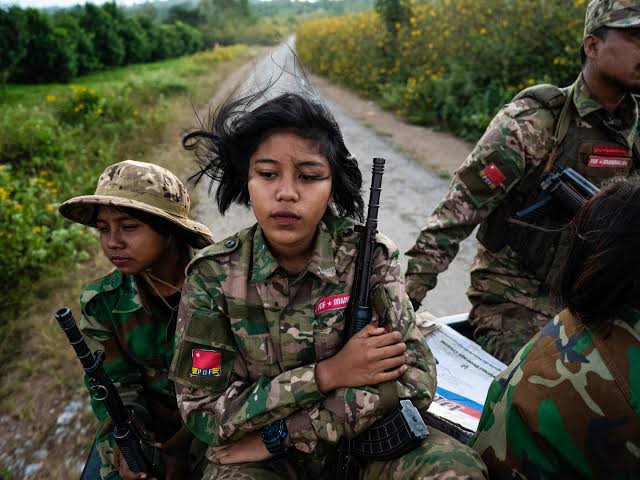Myanmar’s conflict is getting worse: anti-coup forces start a new offensive in the north
Anti-coup forces started a new offensive in the northern area, which goes from Mandalay to Lashio. This has made the conflict in Myanmar worse. This area, which is about 280 kilometers (174 miles) long, is important because it is home to the military’s Northeastern Regional Command center. The recent increase in fighting is a turning point in the ongoing conflict in the country between the military junta and different rebel groups.
On June 25, there was a big explosion in the town of Mogok in the central Mandalay region of Myanmar. This was the start of more military action. People in the area, like Hla Su and her family, had to go to homemade shelters to stay safe. The ethnic Bamar woman, 34 years old, detailed the terrible conditions: “When the explosions stopped, I cooked quickly, but I couldn’t eat well.” I was scared and stressed out to the max. It was hard to sleep because of the sound of air strikes. People like her are caught in the middle of the fighting, which is a picture of the larger humanitarian situation going on in the area.

Amid rising violence, Myanmar’s civilians bear the brunt of a new northern offensive by anti-coup forces seeking change.
With their offensive in the north, anti-coup troops have made the situation a lot worse. These groups, which include ethnic armed organizations and new resistance groups, want to question the military’s control over important areas. The area that was attacked is tactically important because it is home to the military’s Northeastern Regional Command, which is a key part of the junta’s operations.
As different groups fight back against the military’s rule, the current situation shows how a “new Myanmar” could come about. A lot of different racial and political groups have joined the anti-coup movement because they are all against the coup in February 2021 that removed Aung San Suu Kyi’s freely elected government. The resistance wants to do more than just question the military’s power. They also want to make Myanmar a federal democracy where the rights of all racial and political groups are respected.
International observers are very worried about how the bloodshed is getting worse. Human rights groups and the UN have both spoken out against the military’s actions, such as airstrikes and artillery bombardments, which have hurt people more than soldiers. There have been a lot of deaths, a lot of people have been forced to leave their homes, and the humanitarian situation is getting worse because of the war.
The situation is still unstable, and both sides seem to be stuck in a long, nasty fight. To keep control of the area, the junta has reacted to the northern offensive by sending more troops and using airstrikes to increase military power. At the same time, anti-coup groups are still getting support and strengthening their positions, with help from both inside and outside of the country.
The future of Myanmar is uncertain as long as the fighting lasts. There is a big chance that the results of these fights will change the political environment. It is still very important for the international community to help find peaceful answers and be a mediator. People who have been affected by the violence also need humanitarian aid.

Northern Myanmar faces turmoil as anti-coup forces escalate their offensive, challenging the military’s stronghold.
In conclusion, the recent attack in the north of Myanmar by anti-coup forces shows how the conflict is getting worse and the fight for control of the country is still going on. Myanmar’s political situation could change a lot depending on how this war ends. This could lead to a more democratic and open future. But the current humanitarian situation needs to be dealt with right away so that it doesn’t have too much of an effect on the civilian population.